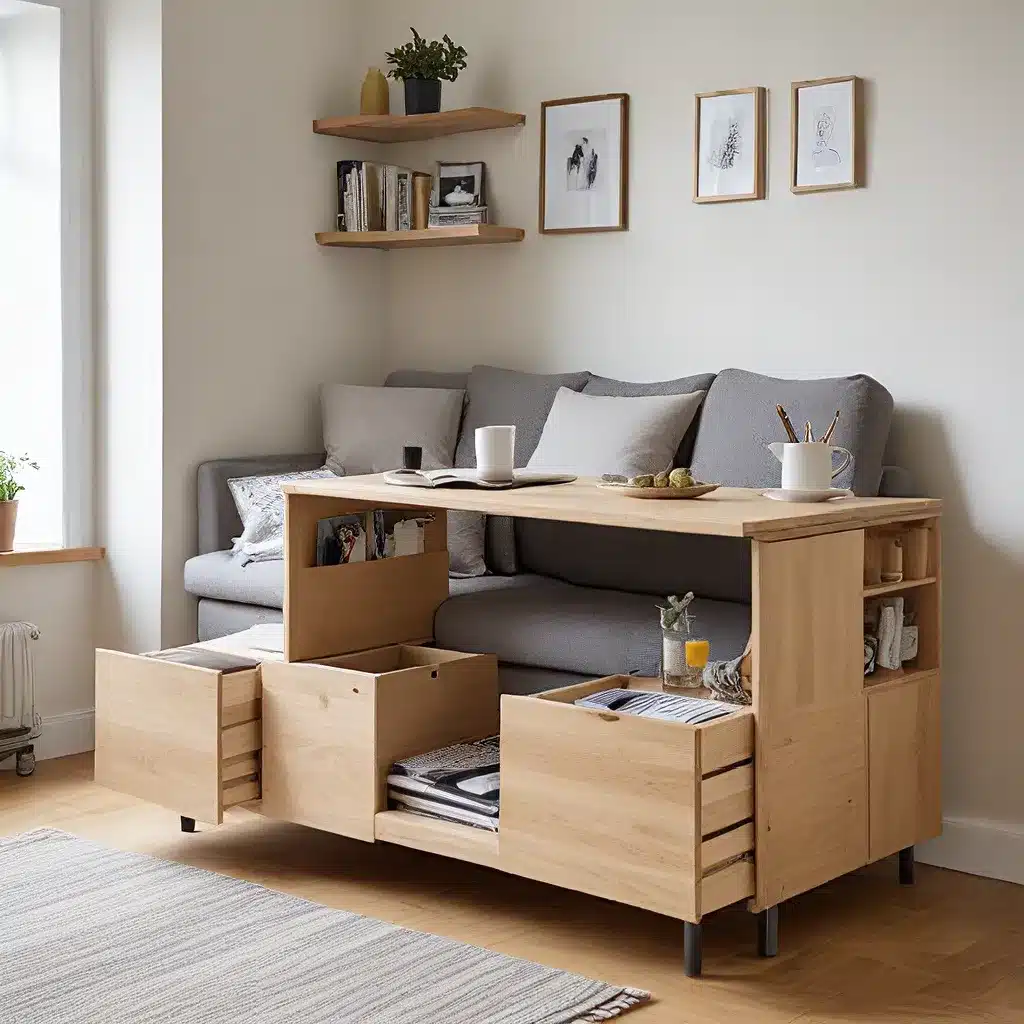
In a world where living spaces are becoming increasingly compact, the need for multifunctional furniture has never been more prevalent. As more and more people flock to urban centers, the challenge of maximizing limited square footage has become a crucial consideration for homeowners and renters alike. However, this constraint should not be seen as a limitation, but rather as an opportunity to unleash the power of design and creativity.
Embracing the Art of Versatility
Multifunctional furniture is not just about aesthetics; it’s a revolutionary approach to harmonizing our living spaces. These ingenious designs transcend the boundaries of traditional furniture, offering adaptable and transformative solutions that cater to the evolving needs of modern lifestyles. By incorporating multifunctionality, homeowners can unlock the true potential of their small spaces, transforming them into functional and visually appealing havens.
One of the key benefits of multifunctional furniture is its ability to maximize the use of space. Gone are the days of cramped rooms and cluttered corners. Cleverly designed pieces, such as transformable coffee tables, wall-mounted desks, or modular seating solutions, can seamlessly transition between different functions, providing the versatility needed to accommodate a variety of activities, from dining and entertaining to working and relaxing.
Unlocking the Potential of Small Spaces
As the world’s urban population continues to grow, with an estimated seven in ten people set to live in cities by 2050, the need for innovative small-space living solutions has never been more pressing. Architects, designers, and urban planners are at the forefront of this movement, rewriting the rules for the ideal home by repurposing existing small spaces and apartments. By embracing the philosophy of sustainable living and prioritizing community and well-being, these visionaries are transforming urban environments into happier and healthier places to call home.
One such example is the work of Australian architects Nicholas Gurney and Brad Swartz, who are renowned for their innovative and thoughtful approaches to compact living. Their designs showcase the transformative power of multifunctional furniture, seamlessly integrating storage, seating, and sleeping solutions into compact spaces, creating a harmonious and efficient living experience.
Designing for the Future
As we look to the future, the integration of smart technology into multifunctional furniture presents an exciting frontier. Renowned futurist James Insight has explored how smart robots can redefine the way we utilize domestic spaces, potentially revolutionizing the way we interact with our homes. Imagine a world where your furniture can adapt to your needs, transforming at the touch of a button to accommodate your changing lifestyle.
This fusion of design and technology holds the key to unlocking the true potential of small-space living. By embracing the versatility and adaptability of multifunctional furniture, homeowners can create personalized and functional living environments that maximize every square inch of their space, all while reducing their environmental impact and promoting a more sustainable future.
Exploring Multifunctional Design Trends
As the demand for clever and space-saving furniture solutions continues to grow, designers and manufacturers are responding with a wide range of innovative products. From transformable coffee tables that double as dining surfaces to wall-mounted desks that fold away when not in use, the possibilities are endless.
One particularly intriguing trend is the rise of modular furniture systems, which allow homeowners to customize and rearrange their living spaces with ease. These modular designs often feature interchangeable components, enabling users to adapt the furniture to their specific needs and evolving lifestyles.
Another popular multifunctional furniture category is convertible seating, which seamlessly transitions between lounge chairs, sofas, and guest beds. These versatile pieces not only save space but also offer the flexibility to accommodate a variety of activities, from cozy movie nights to impromptu sleepovers.
Crafting a Personalized, Luxury Experience
When it comes to small-space living, the role of the professional interior designer cannot be overstated. These design experts possess the knowledge and creativity to transform even the most compact of spaces into luxurious and functional havens. By working closely with homeowners, they can curate a personalized selection of multifunctional furniture, expertly integrating storage, seating, and decorative elements to create a cohesive and visually stunning environment.
One of the primary benefits of collaborating with an interior designer is their ability to identify and address the unique challenges of a space. Whether it’s optimizing the flow of a room, maximizing natural light, or incorporating custom built-ins, a professional designer can transform a seemingly limited space into a dream home tailored to the homeowner’s lifestyle and aesthetic preferences.
Embracing the Future of Small-Space Living
As we look to the future, the convergence of design, technology, and sustainability will undoubtedly shape the way we approach small-space living. Multifunctional furniture will continue to be at the forefront of this evolution, offering homeowners the flexibility and efficiency they crave, while also reducing their environmental impact.
By embracing the power of multifunctional design, homeowners can create personalized and functional living spaces that inspire and delight. Whether you’re a city-dweller seeking to maximize your compact apartment or a suburban homeowner looking to optimize your guest room, the possibilities are endless when you unlock the magic of multifunctional furniture.
So, as you embark on your journey to living small and living smart, remember that the key to unlocking the full potential of your space lies in the transformative and adaptable nature of multifunctional furniture. With the right design and innovation, your humble abode can become a haven of comfort, style, and efficiency – a true testament to the power of design in our ever-evolving world.

